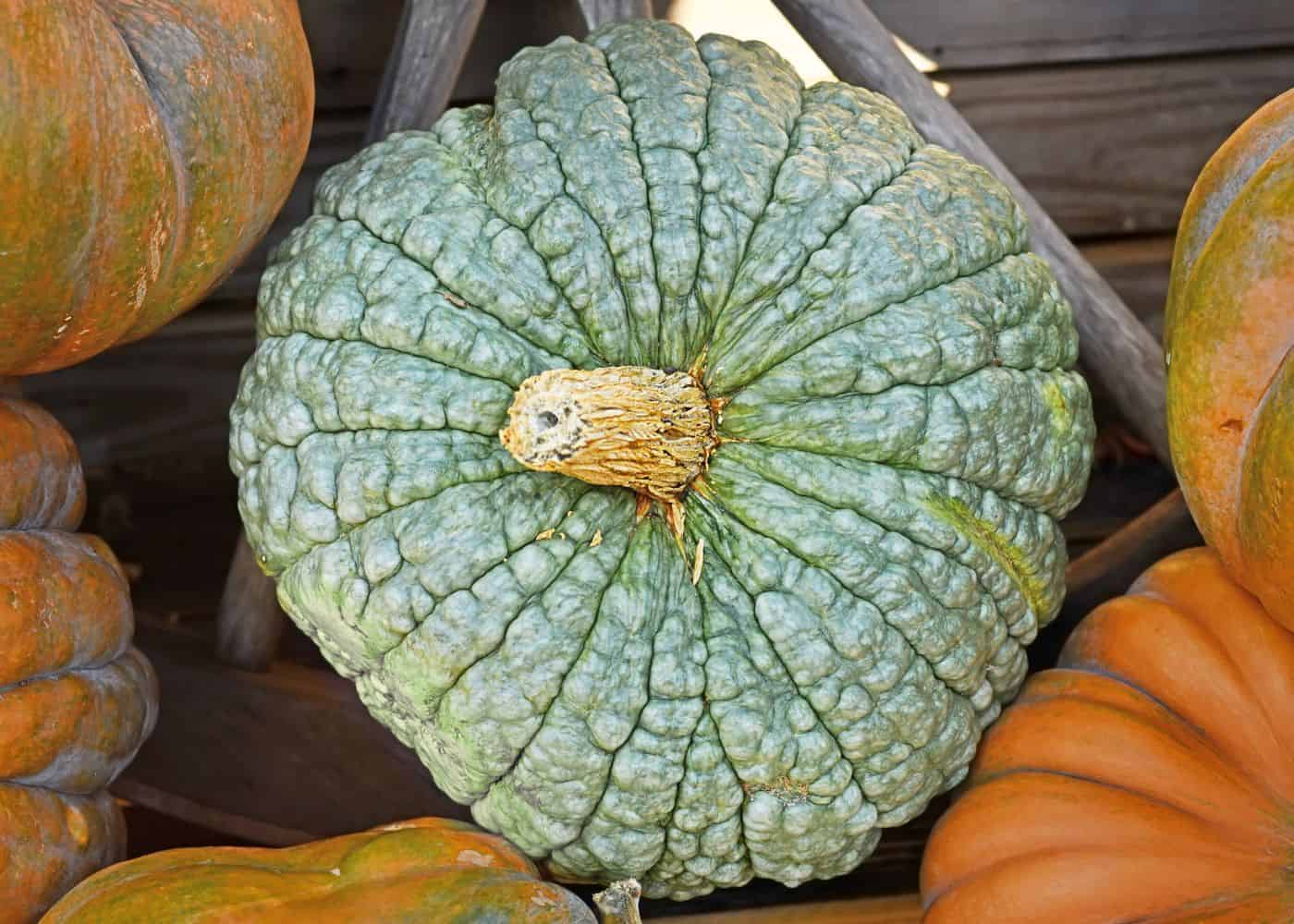The Marina di Chioggia pumpkin is an Italian heirloom variety known for its wrinkled dark green peel and richly flavored golden flesh. These pumpkins are prized for both fall decor and for culinary purposes such as baking, grilling, soups, and pasta dishes.
Introduction to the Marina di Chioggia pumpkin
The Marina di Chioggia pumpkin is an heirloom variety from Chioggia, which is a seaside town in Italy near Venice. This open-pollinated cultivar is known for its unique wrinkled blue-green rind and is delicious for baking, pies, grilling, and stuffing ravioli.
Marina di Chioggia pumpkin is a cultivar of the species Cucurbita maxima. This species is quite diverse and includes other heirloom pumpkins like Jarrahdale and Queensland Blue, giants like Big Max and Dill’s Atlantic Giant, as well as popular winter squash like Hubbard, Kabocha, and Buttercup.
Marina di Chioggia pumpkins are usually turban-shaped and weigh about 10 pounds each. Their deeply wrinkly, almost blistered skin has a deep blue-green color on the outside. Inside, this cultivar has richly flavored, sweet golden flesh. Marina di Chioggia is an open-pollinated cultivar that can be used for home seed saving.
Marina di Chioggia pumpkin plants take about 100 days from planting to harvest. Ripe pumpkins are usually in the weight range of 6-12 pounds each. They grow best in full-sun planting locations when the weather is warm, and irrigation water is freely available. They also thrive in rich soil with lots of organic matter.
These gourmet pumpkins store best when allowed to fully ripen on the vine. The rinds get quite hard and can help keep the pumpkin safely stored for 6 months in good home storage conditions. This Italian gourmet variety is prized for roasting, soups, and for adding to classic Italian pasta dishes.
“This excrescent, bump-rinded turban squash is not only oddball, it is deliziosa. Marina was born to be gnocchi and ravioli.”
The Compleat Squash: A Passionate Grower’s Guide to Pumpkins, Squash, and Gourds, By Amy Goldman
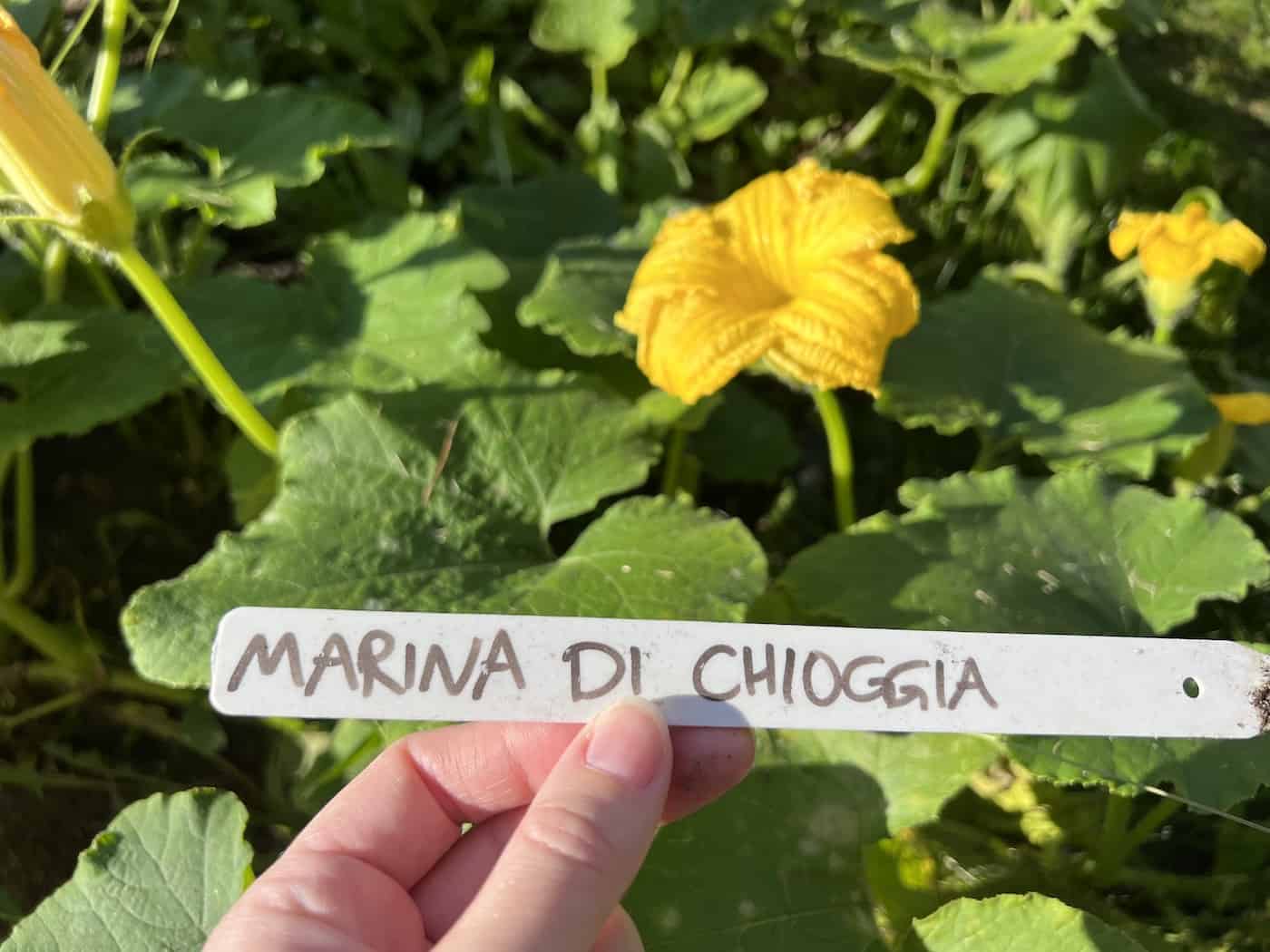
How to grow Marina di Chioggia pumpkins
While the Marina di Chioggia pumpkin looks quite different than most other pumpkins, the steps for growing it are the same.
When to plant pumpkin seeds
Pumpkins are warm-season veggie plants that prefer warm weather and struggle in temperatures below about 50°F (10°C). Don’t plant the seeds into cold, wet soil in the early spring. Wait instead for soil to dry out and nighttime temperatures to rise before planting the seeds.
The optimal soil germination temperature range for pumpkin seeds is 70°F − 90°F (21°C − 32°C). Germination can be very slow in cold soil, and the seed may rot before it germinates properly. Wait for the soil to warm up to at least about 55°F (13°C) before planting the seeds outdoors (use a soil thermometer – it’s worth it).
Marina di Chioggia pumpkin plants typically take 100 days from the time of seed planting to the date of harvest (or longer in less-than-ideal conditions). If your growing season of days with weather above about 50°F (10°C) is less than 100 days, you may wish to start your seeds indoors, even though pumpkin plants usually do best when direct-seeded.
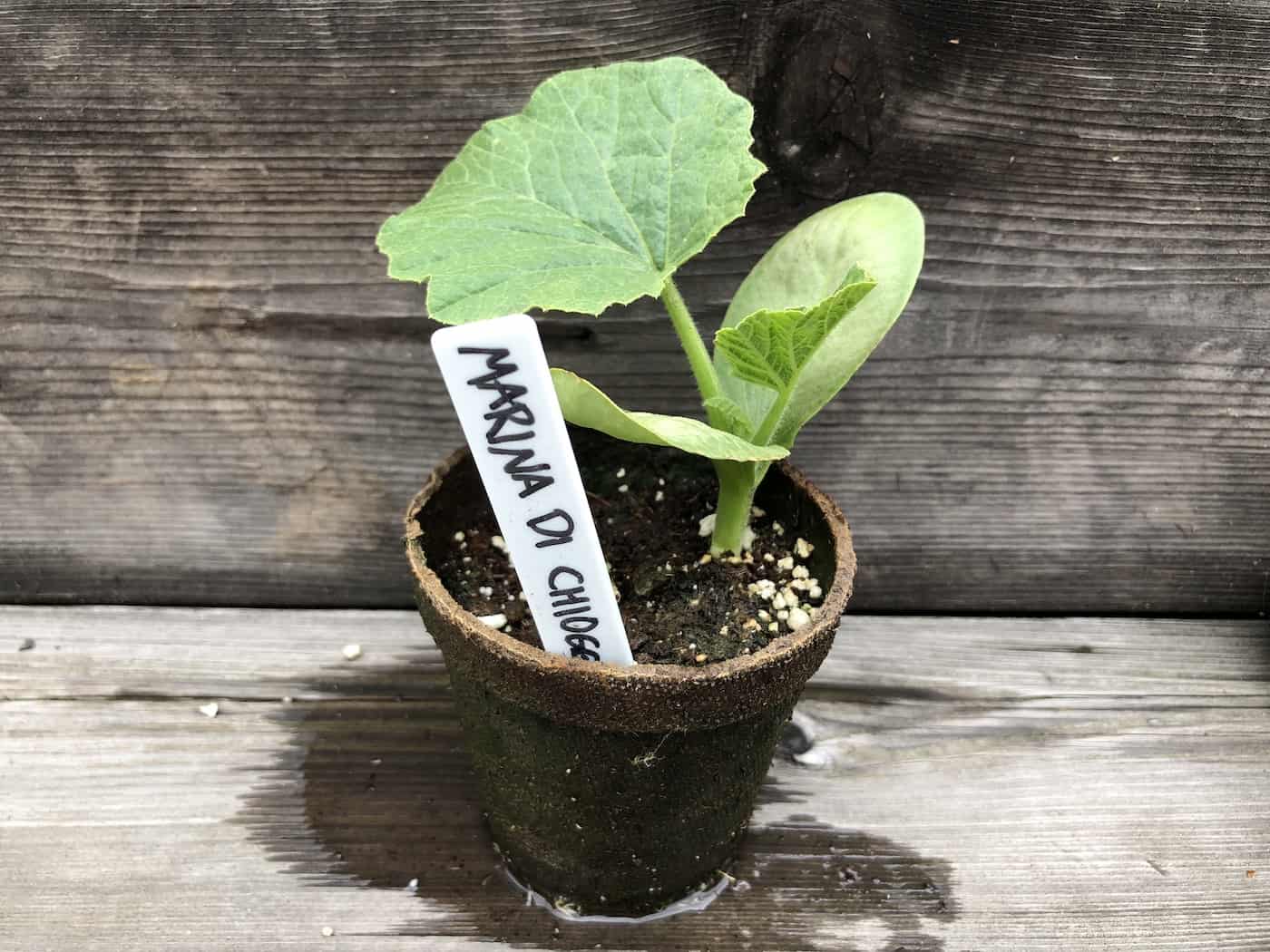

Where to plant pumpkins
Pumpkin plants are sun-loving, warm-season crops that thrive best in well-draining soil rich in organic matter. These sprawling plants require a location that receives a minimum of 6 to 8 hours of direct sunlight daily.
Pumpkin plants like Marina di Chioggia do need ample room to spread, so space plants about 4 feet apart if space allows. Raised beds or hills are commonly used to promote better drainage and soil warmth, both of which can contribute to the plant’s robust growth.
While they are quite adaptable to various soil types, pumpkins flourish in soils with a slightly acidic to neutral pH level, around 6.0 to 7.5. Ensuring a location with good air circulation helps minimize the risk of fungal diseases.
How to plant pumpkin seeds
Start by loosening the soil to a depth of at least 12 inches and removing any weeds or other plant debris. Amend poor soil by mixing in well-decomposed compost or well-rotted manure to enrich it.
Create small mounds or hills about 4 feet apart. If you have time, you can soak your pumpkin seeds for about an hour prior to planting to “wake them up” from dormancy and hopefully speed germination. Plant 2-3 seeds per hill, sowing them about 1 inch deep.
Water the soil thoroughly after planting, taking care to observe that the water is draining down into the soil rather than puddling on the surface. Mulch the surface with a layer of organic compost to keep weeds down while the plants are small.
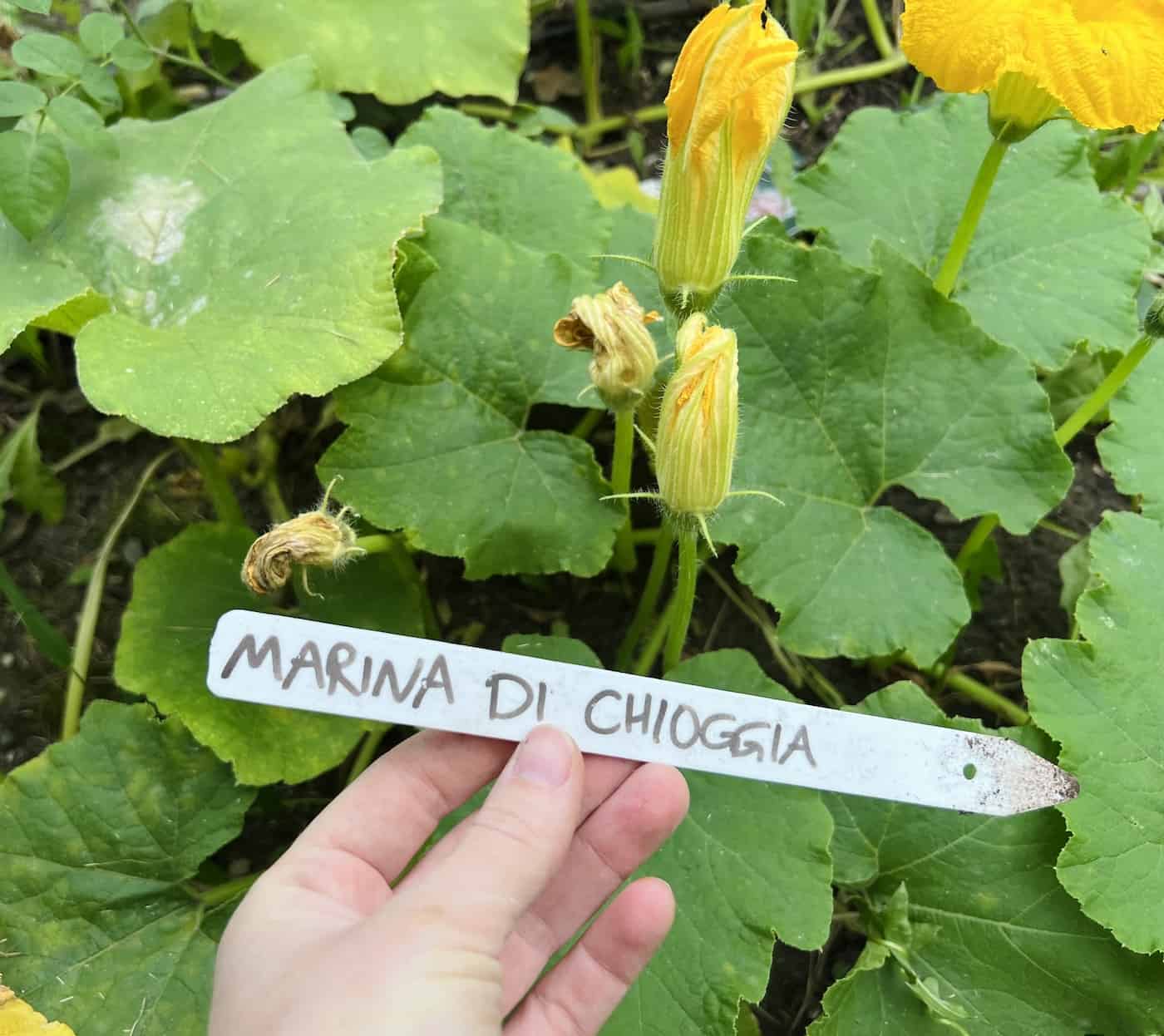
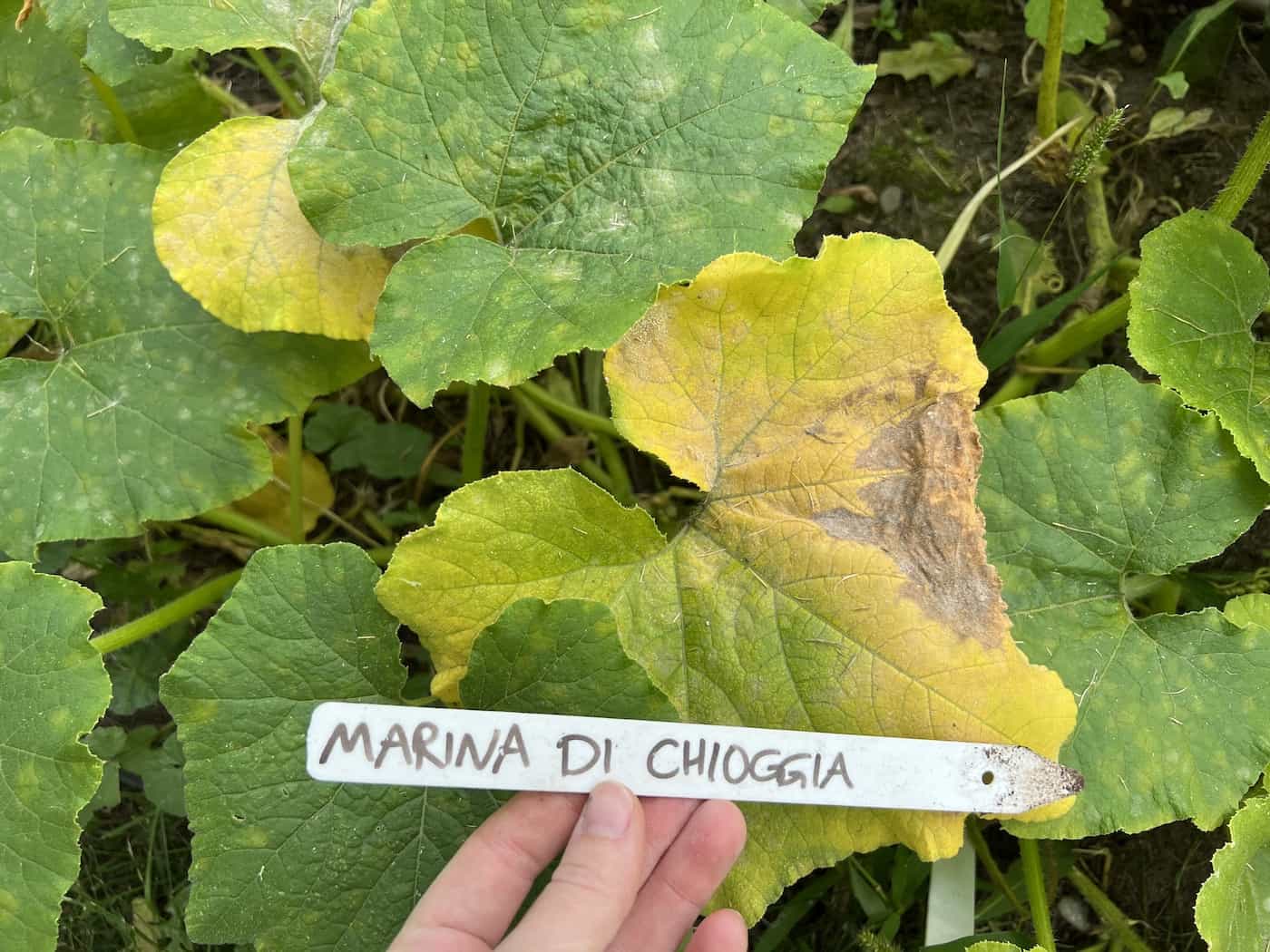
How to care for growing pumpkin plants
Keep the soil moist, but not waterlogged, until the seedlings start to sprout. Once the seedlings emerge and grow a few inches tall, thin them out, leaving only the strongest plant per hill. Don’t pull out the weakest seedlings – just trim them off at their base with a pair of scissors or pruning shears. Thinning gives each pumpkin plant ample space to grow and ensures they receive sufficient nutrients from the soil.
Watch for weeds growing between the plants. Pull them out while they are small and easy to remove. Once the pumpkin plants are larger, the big leaves will crowd out many of the weeds.
Regular watering, especially during dry spells, and periodic fertilization will encourage healthy, vigorous plants that produce plump and flavorful pumpkins. A drip line on an automated timer can be quite helpful if you have a busy household.
Pumpkin plants require pollination to set fruit. Each plant has both male and female blossoms, and the plants need insects like bees to move pollen between flowers for successful fertilization. If you don’t see many pollinators around, consider adding some pollinator garden plants to the area. You can also pollinate pumpkin blossoms by hand.
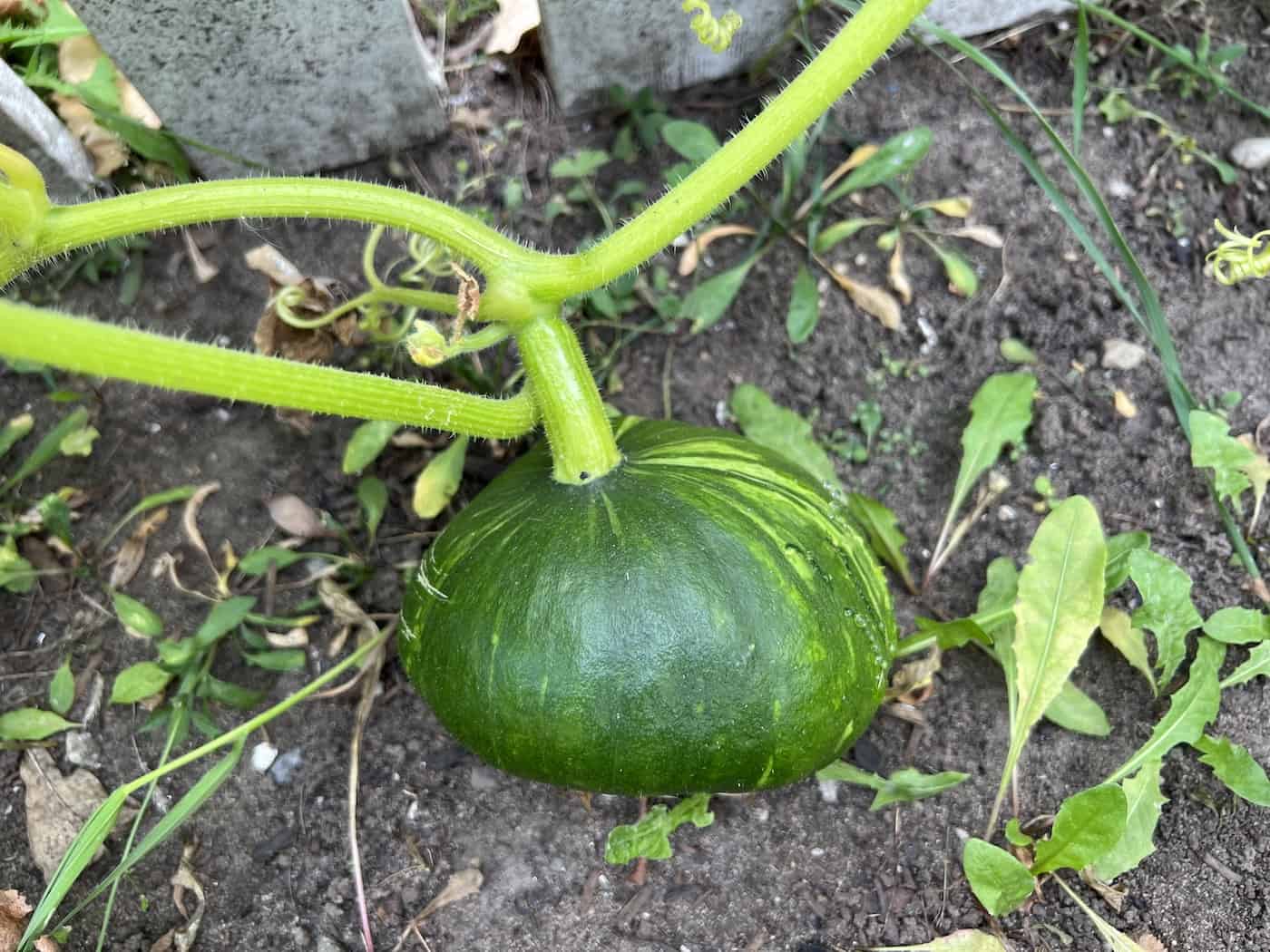
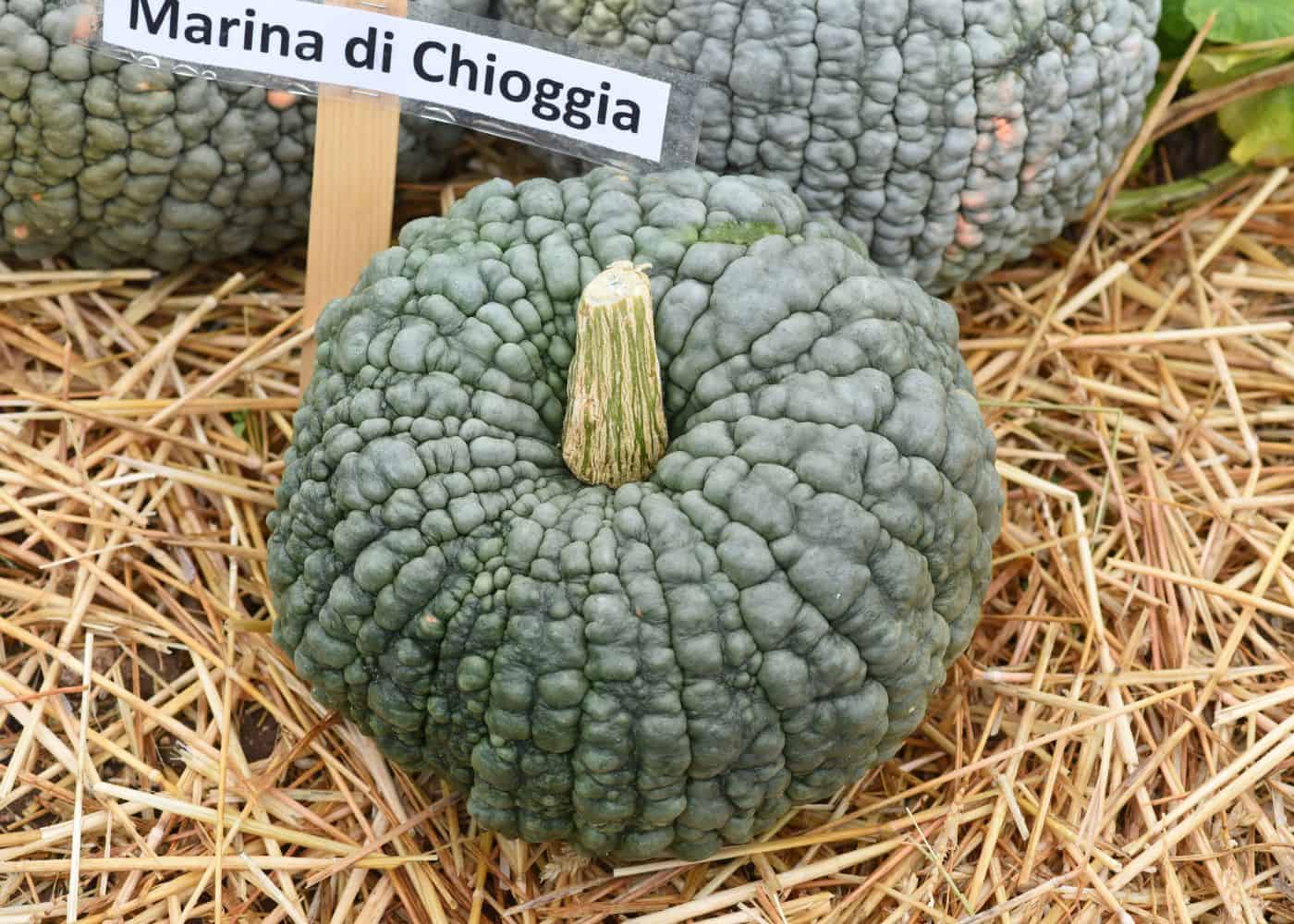
How to harvest Marina di Chioggia pumpkins
Wait at least 100 days after planting, and until the pumpkin rinds develop their characteristic blisters. Fully vine-ripened pumpkins last much longer in storage than pumpkins picked when they are young and not fully developed.
Pumpkin vines can be prickly, so use garden gloves when harvesting your pumpkins. Use pruning shears or a harvest knife to cut through the vine near the pumpkin, leaving at least 2-3 inches of intact vine attached to the pumpkin. Use any pumpkins with nicks or scratches first, as they won’t last as long as whole intact fruits.

Using Marina di Chioggia pumpkins in cooking
Marina di Chioggia is a gourmet culinary pumpkin used mainly in savory applications. It can simply be sliced, roasted, and served with a bit of salt and pepper.
The cooked pulp can also be added to dishes like soup or pasta. In particular, this variety is suited to stuffed pasta like ravioli. You can also mix it into pasta dough to create pumpkin-flavored pasta.


